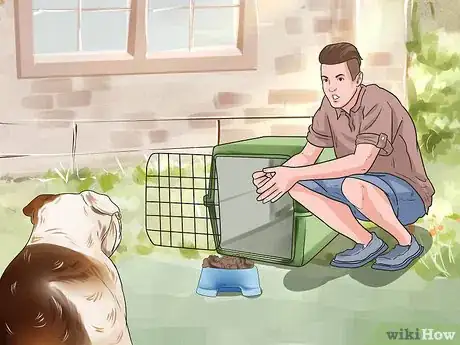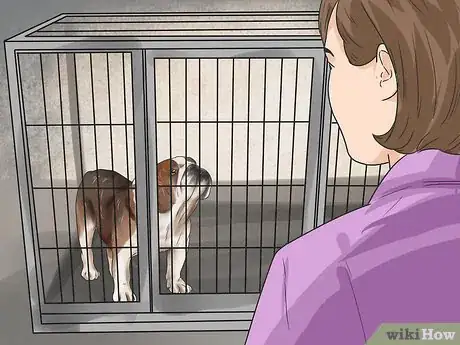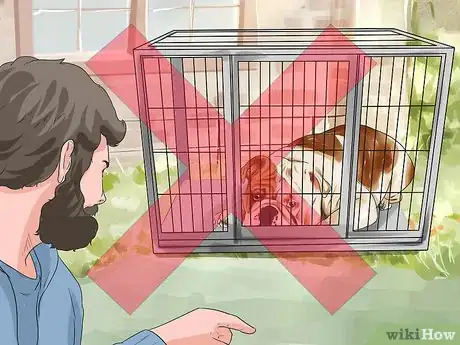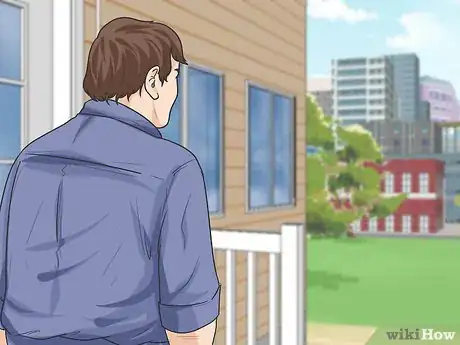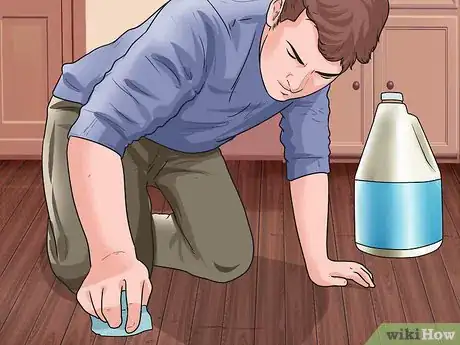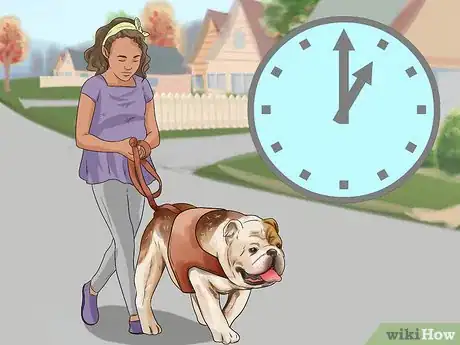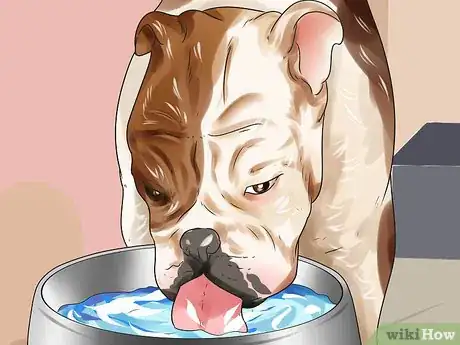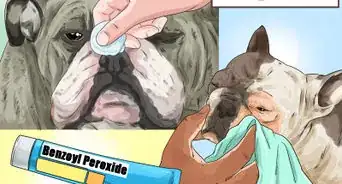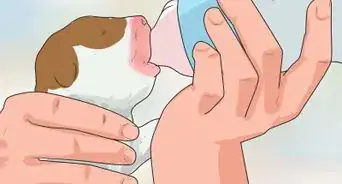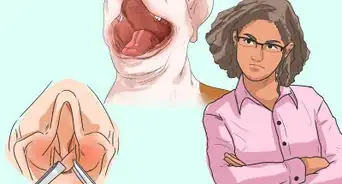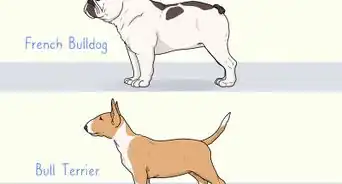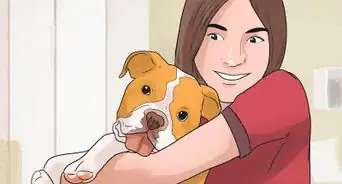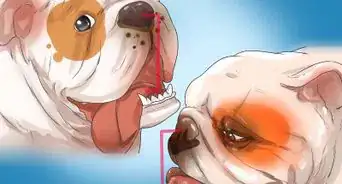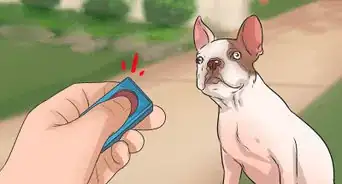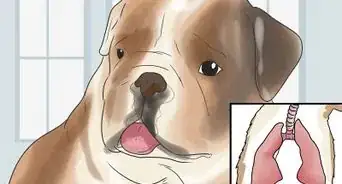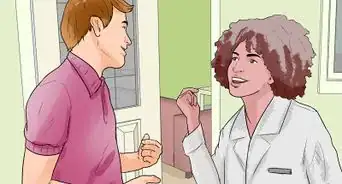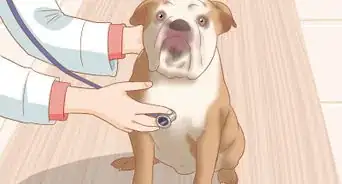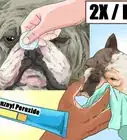This article was co-authored by Brian Bourquin, DVM. Brian Bourquin, better known as “Dr. B” to his clients, is a Veterinarian and the Owner of Boston Veterinary Clinic, a pet health care and veterinary clinic with three locations, South End/Bay Village, the Seaport, and Brookline, Massachusetts. Boston Veterinary Clinic specializes in primary veterinary care, including wellness and preventative care, sick and emergency care, soft-tissue surgery, dentistry. The clinic also provides specialty services in behavior, nutrition, and alternative pain management therapies using acupuncture, and therapeutic laser treatments. Boston Veterinary Clinic is an AAHA (American Animal Hospital Association) accredited hospital and Boston’s first Fear Free Certified Clinic. Brian has over 19 years of veterinary experience and earned his Doctor of Veterinary Medicine from Cornell University.
There are 15 references cited in this article, which can be found at the bottom of the page.
This article has been viewed 23,697 times.
Bulldogs are large, stocky, and aggressive looking, yet surprisingly affectionate and kind.[1] Although eager to please, bulldogs can also be stubborn, making training challenging.[2] If you have a bulldog, patience and consistency will be key to training him successfully. After training, your bulldog will be your well-behaved and loving companion.
Steps
Crate Training Your Bulldog
-
1Purchase a crate. Crate training will have many benefits for your bulldog, including protecting him from household hazards and reducing his separation anxiety.[3] To begin crate training, you will need to select the right-sized crate for your bulldog. It should be either 24 x 30 inches (61 x 76 cm) or 24 x 36 inches (61 x 91 cm) for a French bulldog, and either 42 x 30 inches (107 x 76 cm) or 42 x 36 inches (107 x 91 cm) for an American bulldog.[4]
-
2Make the crate feel like home to your bulldog. The crate should be a place of safety and comfort for your bulldog.[7] The more welcoming it feels to him, the more likely he’ll want to spend time inside of it. Place his favorite blanket and toys in the crate. You can also place a quilt or sheet over the crate to make it feel like a cozy den.[8] In addition, place his food and water bowls in the crate.Advertisement
-
3Encourage your bulldog to explore the crate. Since bulldogs are motivated by food, place some food in your bulldog’s bowl or on the crate floor to encourage him to enter the crate. A bowl would preferable, since he wouldn't be able to pull it out of the crate very easily.[9] Whenever he enters the crate, give him lots of verbal praise—this will teach him that going inside his crate is a good thing.
- Leave the door open during the early stages of crate training so he can explore the crate at his leisure.
- Consider giving him a verbal command, such as ‘crate,’ to enter the crate.[10] Immediately give him a treat and verbal praise when he enters the crate after your command.
-
4Practice leaving your bulldog in the crate. Once your bulldog is comfortable entering the crate on his own, work on closing its door behind him. Start with closing the door for only a few seconds and then letting him out. If he starts whining or crying, wait until he calms down before opening the door. When he can handle a few seconds, close the door, leave the room, and return after random lengths of time (e.g., 2 minutes, 5 minutes).[11]
- Opening the door only when he is calm will teach him not to use whining and crying to get your attention while he is in the crate.
- Remember that puppies cannot hold their bladders for very long, so you should not leave your puppy bulldog in the crate for long time periods.[12] Until 12 months of age, puppies can hold their bladders for about 1 hour per month of age.[13]
- When you are home, spend time with your bulldog while he is in the crate. Bulldogs are friendly and sociable dogs; interacting with your bulldog will keep him from getting lonely.[14]
-
5Do not use the crate as punishment. Always remember that the crate is a place of safety and comfort, not punishment.[15] No matter how frustrated you get with your bulldog, especially if he has misbehaved, never send him to his crate to punish him. Your bulldog should always have a positive association with the crate.
House Training Your Bulldog
-
1Select an outdoor bathroom spot. Through house training, your bulldog will learn how to eliminate outside. If you have a backyard, choose an area of your yard where he will be protected from the elements (e.g., wind, rain) while eliminating.[16] If you do not have a backyard, choose a spot on your usual walking route where he can safely eliminate.
- Your bulldog should eliminate in this same spot each time. In your backyard, this spot will have his scent, so he will know to return to that area.[17]
-
2Establish a regular bathroom schedule. House training will not be effective if your bulldog does not know when he’ll be going outside. This is particularly important for puppies. If you have a bulldog puppy, take him out after certain activities, including eating, drinking and playing. In addition, he should go out first thing in the morning, before he goes to bed, and when you take him out of the crate.[18]
- Puppy bulldogs need to go out anywhere from 4 to 10 times a day. Adult and elderly bulldogs should go out 3 to 4 times a day.
- Take your adult or elderly bulldog out after eating as well.
- If your work schedule does not allow you to take your puppy bulldog out frequently, consider hiring a pet sitter or asking a neighbor to take him out during the day.
-
3Praise your bulldog when he eliminates outside. Your bulldog needs to know he’s done the right thing during house training. Give him plenty of verbal praise (‘Good dog!’ or ‘Good job!’) when he eliminates in the designated spot.[19] The more positive reinforcement he gets from you, the more likely he’ll eliminate outside rather than in your home.
-
4Clean up your bulldog’s accidents. During house training, your bulldog may have the occasional accident in the house, particularly if he’s a puppy. Clean up the accident with an enzymatic cleaner so he doesn’t go back to the same spot.[20] Do not punish him (e.g., rubbing his nose in the urine or feces), especially if you didn’t catch him in the act—he will not be able to connect the punishment with what he did, and may end up being afraid to eliminate when you’re around.[21]
- Do not use a cleaner with ammonia. Ammonia breaks down to urate, which is a component of urine.
- Keep your bulldog away from the area when you clean it up so he cannot see what you are doing. If he sees you, he might think eliminating inside is okay, since you’re willing to clean it up.[22]
- If you catch him in the act, firmly say ‘No,’ take him outside quickly and praise him when he finishes eliminating outside.[23]
Performing Obedience Training With Your Bulldog
-
1Keep training sessions short. Bulldogs have short attention spans, so training sessions with your bulldog should not last more than 5 to 10 minutes.[24] Make the training sessions positive and upbeat so the training won’t feel like a chore to him.
-
2Teach only one command at a time. Trying to teach multiple commands at one time may confuse your bulldog, and he may not learn any of them. Instead, focus on one command at a time and practice it until your bulldog masters it. It may take him a while to learn each command, so be patient with him. Your bulldog wants to please you, so take your time with him as he learns.[25]
- Start with basic commands, such as sit, stay, and heel.
- Bulldogs can be very possessive with food. Teach your bulldog the 'leave it’ and ‘drop it’ commands. These commands will teach him to let go of food so you don't have to reach into his mouth and possibly get bitten.[26]
- Consider enrolling your bulldog in obedience training so he can learn basic commands. Formal obedience train can keep him physically and mentally busy.
-
3Train your bulldog indoors and give him water. Bulldogs have shortened faces, making it hard for them to breathe. Training your bulldog inside your home, where he will be in a temperature-controlled room and not exposed to heat or humidity, will help him breathe more easily. Also, since panting can cause a lot of phlegm to build up in your bulldog’s airway, make sure he has plenty of water to drink during his training sessions.[27]
Warnings
References
- ↑ http://dogtime.com/dog-breeds/bulldog
- ↑ https://www.petcarerx.com/article/english-bulldog-care-and-training-facts/292
- ↑ http://www.bulldogsworld.com/puppy/crate-training-tips-your-bulldog-puppy
- ↑ https://apdt.com/resource-center/choosing-right-crate-size/
- ↑ https://www.petcarerx.com/article/english-bulldog-care-and-training-facts/292
- ↑ http://www.bulldogsworld.com/puppy/bulldog-house-crate-training
- ↑ Brian Bourquin, DVM. Veterinarian. Expert Interview. 20 December 2019.
- ↑ http://www.bulldogsworld.com/puppy/crate-training-tips-your-bulldog-puppy
- ↑ https://petcareeducation.com/bulldog-training/
- ↑ https://www.petcarerx.com/article/english-bulldog-care-and-training-facts/292
- ↑ https://www.pbrc.net/crate-training.html
- ↑ http://www.humanesociety.org/animals/dogs/tips/crate_training.html
- ↑ http://www.akc.org/learn/akc-training/how-to-potty-train-a-puppy/
- ↑ http://www.bulldogsworld.com/puppy/bulldog-house-crate-training
- ↑ http://www.bulldogsworld.com/puppy/bulldog-house-crate-training
- ↑ https://www.petcarerx.com/article/english-bulldog-care-and-training-facts/292
- ↑ http://www.bostonterrierforums.com/training/house-training-your-boston-terrier
- ↑ http://www.akc.org/learn/akc-training/how-to-potty-train-a-puppy/
- ↑ http://www.bulldogsworld.com/puppy/bulldog-house-crate-training
- ↑ http://www.akc.org/learn/akc-training/how-to-potty-train-a-puppy/
- ↑ http://www.humanesociety.org/animals/dogs/tips/housetraining_puppies.html
- ↑ http://www.petmd.com/dog/puppycenter/potty-training/evr_dg_how_to_prevent_puppy_accidents
- ↑ http://www.canismajor.com/dog/hsetrain.html#Accident
- ↑ https://petcareeducation.com/bulldog-training/
- ↑ https://petcareeducation.com/bulldog-training/
- ↑ https://www.petcarerx.com/article/english-bulldog-care-and-training-facts/292
- ↑ https://www.petcarerx.com/article/english-bulldog-care-and-training-facts/292
- ↑ http://www.petguide.com/breeds/dog/bulldog
- ↑ https://petcareeducation.com/bulldog-training/
- ↑ https://petcareeducation.com/bulldog-training/
- ↑ https://www.petcarerx.com/article/english-bulldog-care-and-training-facts/292
- ↑ https://www.petcarerx.com/article/english-bulldog-care-and-training-facts/292
- ↑ https://www.petcarerx.com/article/english-bulldog-care-and-training-facts/292
About This Article
To crate train a bulldog, start by buying a roomy crate and making the inside cozy by adding your dog's favorite blankets and toys. Next, gradually train your bulldog to spend longer periods of time in its crate until it's comfortable with it. Then, begin house training by selecting an official "bathroom" spot outside and establishing a regular bathroom schedule for your dog. Be sure to praise your boxer when it eliminates outside to create positive associations with going to the bathroom in that spot! For tips from our Veterinary co-author on obedience training, read on!



